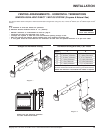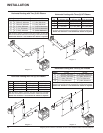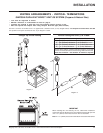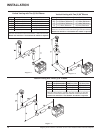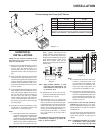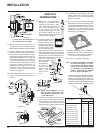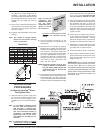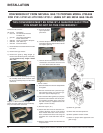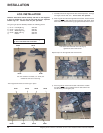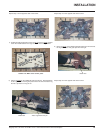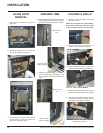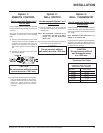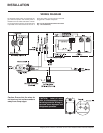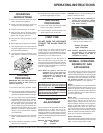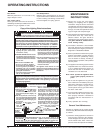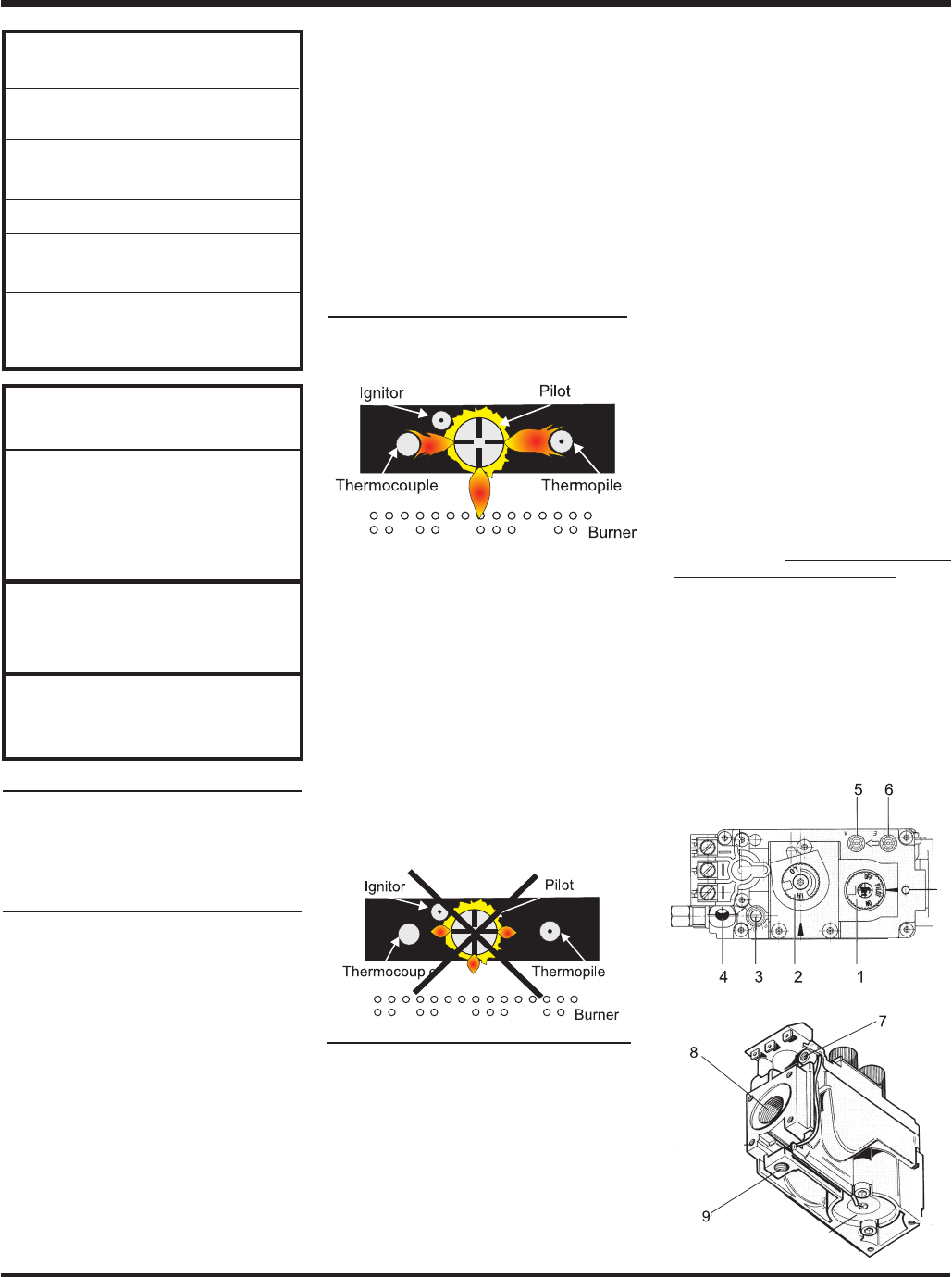
Regency P121-1/P121LC-1/P121RC-1/P131-1 Zero Clearance Direct Vent Gas Fireplace 23
INSTALLATION
GAS PIPE PRESSURE
TESTING
The appliance must be isolated from the gas
supply piping system by closing its individual
manual shut-off valve during any pressure
testing of the gas supply piping system at test
pressures equal to or less than 1/2 psig. (3.45
kPa). Disconnect piping from valve at pres-
sures over 1/2 psig.
The manifold pressure is controlled by a regu-
lator built into the gas control, and should be
checked at the pressure test point.
Note: To properly check gas pressure,
both inlet and manifold pressures
should be checked using the valve
pressure ports on the valve.
1) Make sure the valve is in the "OFF" position.
2) Loosen the "IN" and/or "OUT" pressure
tap(s), turning counterclockwise with a
1/8" wide flat screwdriver.
3) Attach manometer to "IN" and/or "OUT"
pressure tap(s) using a 5/16" ID hose.
4) Light the pilot and turn the valve to "ON"
position.
5) The pressure check should be carried out
with the unit burning and the setting should
be within the limits specified on the safety
label.
6) When finished reading manometer, turn off
the gas valve, disconnect the hose and
tighten the screw (clockwise) with a 1/8"
flat screwdriver.
Note: Screw should be
snug, but do not over tighten.
S.I.T. VALVE DESCRIPTION
1) Gas cock knob
2) Manual high/low adjustment
3) Pilot Adjustment
4) Thermocouple Connection - option
5) Outlet Pressure Tap
6) Inlet Pressure Tap
7) Pilot Outlet
8) Main Gas Outlet
9) Alternative TC Connection
Point
For USA installations follow local codes and/or
the current National Fuel Gas Code, ANSI
Z223.1.
When using copper or flex connectors use only
approved fittings. Always provide a union so
that gas lines can be easily disconnected for
servicing. Flare nuts for copper lines and flex
connectors are usually considered to meet this
requirement.
Important: Always check for gas leaks
with a soap and water solution or gas
leak detector. Do not use open flame for
leak testing.
PILOT ADJUSTMENT
P121/P121LC/P121RC/P131-NG1
System Data
For 0 to 4500 feet altitude
Burner Inlet Orifice Sizes: #31
Max. Input Rating 40,000 Btu/h
Min. Input Rating 20,500 Btu/h
Supply Pressure min.5.0" w.c.
Manifold Pressure
(High) 3.8"+/- 0.2"w.c.
Log Set: Ceramic fibre, 8 per set.
Vent System: Regency Astrocap
TM
, Re-
gency Direct Vent System (Flex) and Simp-
son Dura-Vent Direct Vent System
P121/P121LC/P121RC/P131-LP1
System Data
Conversion Kit# 730-969
For 0 to 4500 feet altitude
Burner Inlet Orifice Sizes: #50
Max. Input Rating 39,000 Btu/h
Min. Input Rating 20,600 Btu/h
Supply Pressure min.12.0" w.c.
Manifold Pressure
(High) 11"+/- 0.2" w.c.
Log Set: Ceramic fibre, 8 per set.
Vent System: Regency Astrocap
TM
, Re-
gency Direct Vent System (Flex) and Simp-
son Dura-Vent Direct Vent System
HIGH ELEVATION
This unit is approved in Canada for altitude 0 to
4500 ft. (CAN1 2.17-M91).
GAS LINE
INSTALLATION
The gas line can be brought through either the
right, the left side or the bottom of the appliance.
The gas valve is situated on the bottom of the
unit.
The gas line connection may be made of rigid
pipe, copper pipe or an approved flex connec-
tor. (If you are using rigid pipe, ensure that the
valve can be removed for servicing.) Since
some municipalities have additional local codes
it is always best to consult with your local
authorities and the CAN/CGA B149 installation
code.
Periodically check the pilot flames. Cor-
rect flame pattern has three strong blue
flames: 1 flowing around the thermopile,
1 around the thermocouple and 1 flowing
across the burner (it does not have to be
touching the burner).
Note: If you have an incorrect flame pat-
tern, contact your Regency dealer
for further instructions.
Incorrect flame pattern will have small,
probably yellow flames, not coming into
proper contact with the rear burner or
thermopile or thermocouple.



